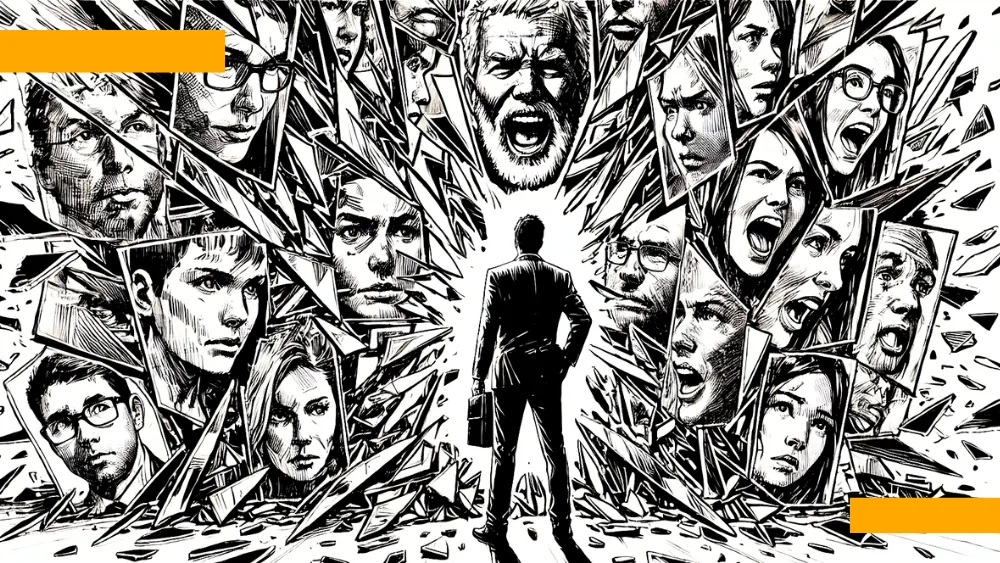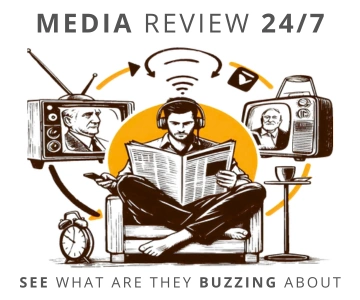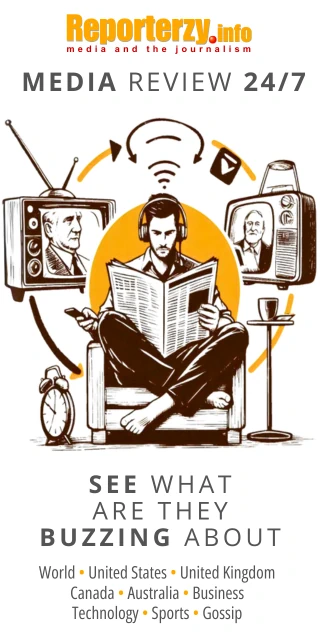 illustration: DALL-E
illustration: DALL-EAs many as 93% of media organizations affiliated with the European Broadcasting Union (EBU) declare that diversity is a priority for them. More than half (60%) have formal DEI strategies, and half employ dedicated staff responsible for implementing these efforts.
These are no longer just declarations. According to the report "PSM Diversity Strategies 2025," produced by Dorien Verckist and Emma Ryborg from the EBU, public media are taking concrete steps to ensure balance within their structures and in the content they produce.
It is worth noting that 66% of organizations implement actions covering at least three different diversity dimensions, such as gender, age, or disability. In 2023, as many as 79% of organizations actively promoted gender balance, while 72% took initiatives to support people with disabilities.
Diversity in Content and Teams
Public broadcasters use an average of ten different tools to support diversity within their staff structures. The most popular include:
- DEI training for employees.
- Mentoring and career development programs for underrepresented groups.
- Revisions of recruitment and promotion procedures to ensure equal access to positions.
- Quantitative and qualitative goals related to employment across various social groups.
- Creating content codes and guidelines for inclusive language.
- Facilities for people with disabilities, including workplace adjustments.
Most organizations focus on ensuring gender balance (79%) and inclusion of people with disabilities (72%). Unfortunately, in some aspects of diversity - such as sexual orientation or religion - actions are significantly less advanced.
| Action Area | Share of Organizations (2023) |
|---|---|
| Gender balance | 79% |
| Inclusion of people with disabilities | 72% |
| Age diversity | 58% |
| Racial and ethnic diversity | 51% |
| Socio-economic status | 49% |
| LGBTQI+ and sexual orientation | 39% |
| Religious diversity | 36% |
It is clear that while gender equality and support for people with disabilities are priorities, other dimensions of diversity are still neglected.
Monitoring and Reporting. Do the Data Tell the Truth?
One of the main challenges faced by public media is monitoring the effects of implemented strategies. As many as 73% of organizations collect diversity data within their teams, while 54% also analyze content diversity.
The tools used in this area are diverse - from surveys and reports to content monitoring and even the use of artificial intelligence for data analysis. However, the lack of consistent methodologies and difficulties in collecting data on minority groups, such as LGBTQI+ individuals or ethnic minorities, remain problematic.
Biggest Challenges in Diversity Management
Despite implemented strategies, many organizations encounter difficulties in their execution. The most frequently cited issues are:
- Lack of unified standards - different countries use different approaches to diversity data monitoring.
- Legal issues - in some countries, regulations prevent the collection of data on sexual orientation or gender identity.
- Implementation challenges - despite good intentions, structural changes often face internal resistance.
- Low representation in senior positions - although the number of women on boards is increasing, they still remain a minority at the highest levels.
- Content monitoring difficulties - it is challenging to analyze whether productions truly reflect social diversity.
What Has Been Achieved?
Despite difficulties, the efforts are yielding results. Public media are becoming leaders in gender balance - women now make up 45% of employees and 46% of management staff. In 2023, half of the promotions went to women, indicating that DEI strategies are bearing fruit.
Moreover, more and more organizations are focusing on transparency - 72% of them publish diversity data about their teams. This not only builds trust but also motivates further action.
The Future of Diversity in Media
The report PSM Diversity Strategies 2025 shows that diversity is becoming an integral part of public media operations. The coming years will bring further strengthening of gender equality efforts and the integration of people with disabilities, but intensifying efforts in less developed areas, such as racial diversity or sexual orientation, is also necessary.
Through an integrated approach to DEI, public media can not only improve their image but also increase audience trust. This is an opportunity to build more open and diverse editorial teams that better reflect the complexity of modern society.
The full report "PSM Diversity Strategies 2025" is available at European Broadcasting Union
COMMERCIAL BREAK
New articles in section Media industry
Paid journalistic content. Market trends and forecasts by Reuters Institute
Krzysztof Fiedorek
Only 18 percent of internet users pay for online news access, and the rate has not increased for the third year in a row. Norway sets records with 42%, while Greece does not exceed 7%. Globally, nearly one in three subscribers cancels after a year.
Gen Alpha avoids tough topics. What young people are really looking for
Krzysztof Fiedorek
Generation Alpha prefers humor in 46% of cases, while only 12% are interested in news and political topics. Young people and children consciously limit what negatively affects their emotions - according to the report "Gen Alpha Unfiltered" published by GWI.
YouTube redefines viewer engagement. Goodbye to returning viewers
KFi
As many as 30% of internet users now turn to YouTube as their main news source, and 65% consume news in video form. Now the platform is shaking things up. Reach still matters, but engagement is what really counts.
See articles on a similar topic:
The Podcast Market in Poland. Research by Wprost and Tandem Media
Krzysztof Fiedorek
How many Polish internet users listen to podcasts? Where and how do we listen? How and why do we choose episodes? Two major studies on this topic were recently released. One by Wprost, the other by Tandem Media from Agora Radio Group. We present both for data comparison and insights.
Mass Media in Poland
Agnieszka Osińska
Into the decade of years 90. Poland entered with media national, subjected to the political control. Starting from the half of 1989 our media market underwent transformations, biggest probably from the time of the World War II.
Read digital newspapers and magazines in PDF, EPUB and MOBI [LINK]
AUTOPROMOCJA Reporterzy.info
The most popular daily, weekly, biweekly and monthly magazines in electronic PDF, EPUB and MOBI formats. For reading on a computer, smartphone and e-reader. The latest issues, archive issues and subscriptions are just a few clicks away. Visit our Reporterzy.info Store
Digital media addiction. Why the brain can’t cope
KFi
Digital media can hijack the brain's reward system in ways similar to drugs and alcohol, warned psychiatrist and author Anna Lembke. She emphasized that compulsive use of digital platforms can become a serious addiction. Not just a bad habit or risky behavior.






























